MFG Day 2024: The MI Goes to Kansas
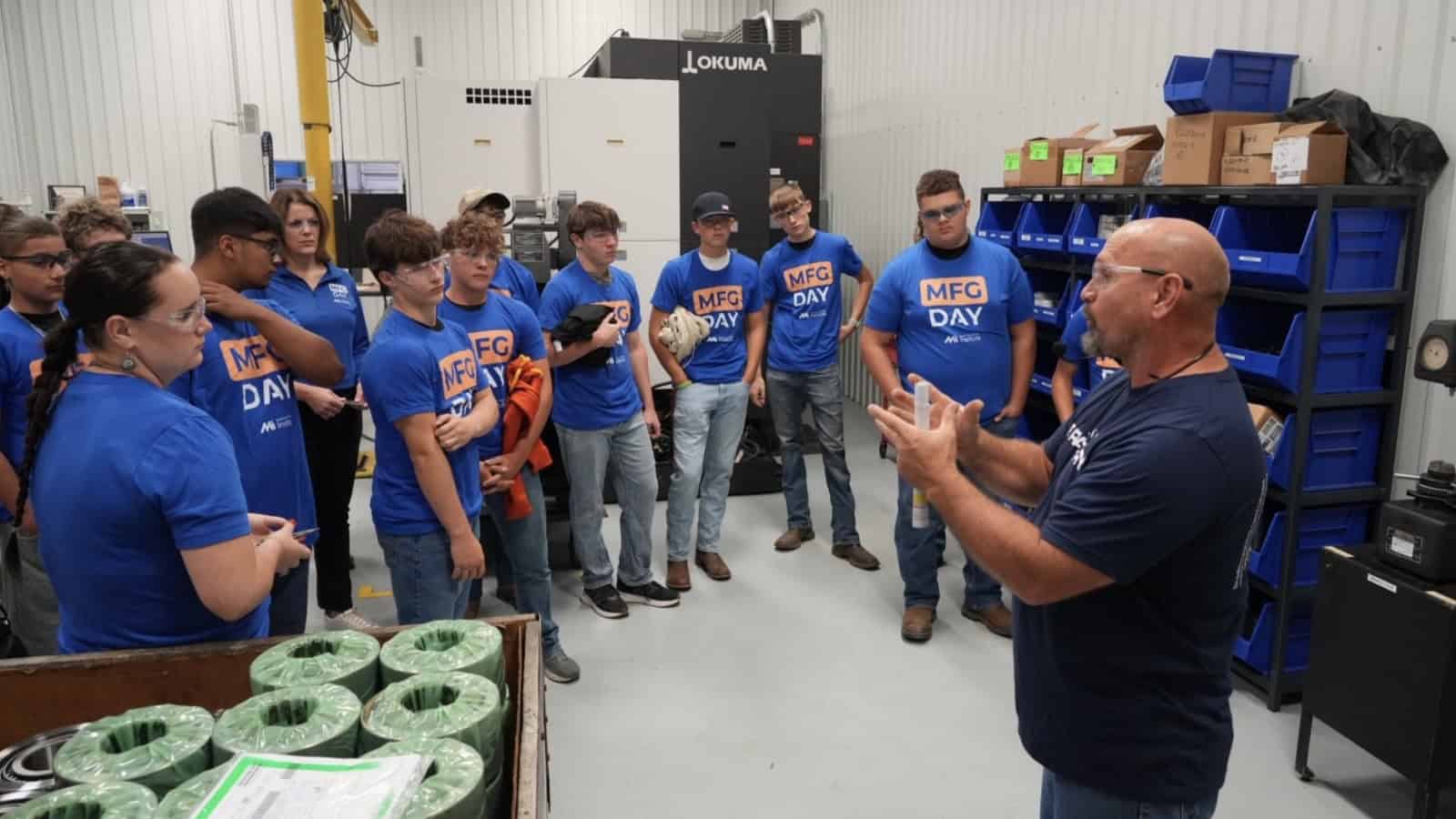
That’s another success for the books! Last week, manufacturers and their supporters nationwide celebrated MFG Day 2024, rolling out the red carpet for students, educators and jobseekers and showcasing modern manufacturing’s diverse career paths.
What’s going on: The Manufacturing Institute, the NAM’s 501(c)3 workforce development and education affiliate, was on the ground in Kansas for multiple plant tours and conversations.
Visiting Bradbury Group: On Thursday’s tour of the Bradbury Group’s plant in Moundridge, Kansas, about 400 students got a firsthand look at how roll-forming and coil-processing equipment is made.
- The company—whose CEO David Cox is an NAM board member—set up stations where attendees could learn about its many career tracks. In addition, local education and community training partners were on-site to showcase job-training initiatives.
- MI President and Executive Director Carolyn Lee participated in the events, touring Bradbury’s facility with approximately 70 students from Newton High School in Newton, Kansas.
Touring with Heroes: On Friday, Lee visited four McPherson, Kansas, manufacturing plants with participants from Heroes MAKE America, the MI initiative that makes connections between the military community and the manufacturing industry.
- The companies were piping-systems manufacturer Viega, insulation and commercial roofing maker Johns Manville, downstream equipment maker Plastics Extrusion Machinery LLC and sustainable construction materials manufacturer CertainTeed.
- At Viega on Friday, Lee spoke with local high school students viewing the facility at the same time as the HMA participants.
Focus on veterans: Friday’s events also featured a networking lunch for HMA participants, including transitioning service members, veterans and military spouses, with human resources representatives from McPherson manufacturers.
- The Bradbury Group—the parent company of four manufacturing businesses in addition to the Bradbury Company, which has participated in MFG Day for nine years—was represented at the lunch by one of its employees, a U.S. military veteran.
Made possible by: This year’s activities were made possibly by generous support from sponsors Union Pacific, Dominion Energy, Johnson & Johnson, Novonesis, UKG, the International Corrugated Packaging Foundation, Lutron Electronics Co. Inc, Winnebago Industries, Alfa Laval (US), Intertek Alchemy, the National Center for Next Generation Manufacturing and Seaway Bolt & Specials Corp.
Stay tuned: MFG Day events will continue across the U.S. throughout October and beyond. You can find the full list of registered events, and a handy map, here.
The last word: “MFG Day is the prime opportunity for manufacturers to demonstrate firsthand the vast career opportunities that exist in industry,” Lee said. “While students, parents and educators remain our primary focus, it’s also a great time to engage other career-seeking groups so that they, too, can see themselves in manufacturing.”
A Veteran and His Spouse Forge New Careers in Manufacturing

Finding a civilian job after serving in the military can be daunting. For former Army cavalry scout Jose Gallegos, the task was even more complicated because his spouse, Aleksandra Balinska-Gallegos, also needed a new position. Through Heroes MAKE America—a Manufacturing Institute program that builds connections between the military community and the manufacturing industry—both Gallegos and Balinska-Gallegos found rewarding roles in Pennsylvania with food and industrial manufacturer Cargill.
The program: Heroes MAKE America provides integrated certification and career-readiness training in partnership with local community colleges to prepare transitioning service members, veterans, National Guard members, reservists and military spouses for rewarding careers in the manufacturing and supply chain industries.
- “The program not only introduces you to the manufacturing world—it prepares you for everything that is around it,” said Balinska-Gallegos. “How to correctly write your resume, how to match a military background with civilian life, how to translate military vocabulary to civilian vocabulary. And from writing a resume to emailing with potential employers and preparing for interviews—it was a little bit of everything.”
The benefit: The program helped both spouses at the same time—a huge benefit for Gallegos, who was looking for opportunities in the civilian world, and for Balinska-Gallegos, who had arrived with Gallegos from Lithuania and was worried about navigating the U.S. job market.
- “I was a completely new fresh military spouse,” said Balinska-Gallegos. “When Jose told me that there was an opportunity not only for him to go to the manufacturing program, but to also take his spouse—I was over the moon.”
Working nearby: Although they work in different plants—Gallegos as an operations and management associate at a meat production plant, and Balinska-Gallegos as an administrative assistant at a plant producing chocolate—their mentors at Heroes MAKE America helped ensure that the couple would work at the same company and in the same location.
- “He’s at a meat plant, and he loves beef. I’m at a chocolate plant, and I love chocolate,” said Balinska-Gallegos. “It’s perfect.”
Finding success: Although Gallegos’ work in the Army was very different from his role at Cargill, his supervisors have already noticed his leadership skills. While the approximately 60 other associates recruited this year are all college graduates, it’s Gallegos who has been called to take on bigger tasks.
- “After my first month, they started giving me supervisor responsibilities,” said Gallegos. “I’m shadowing managers and superintendents so I can learn from them, so … I can be in different areas of the plant.”
The last word: “I would have been very scared to start working in the U.S. without this kind of background, and I’m not sure what [Jose] would have done after leaving the Army if he didn’t go through the Heroes MAKE America program,” said Balinska-Gallegos. “That course prepared us immensely for this new life.”
Learn more: Find out more about Heroes MAKE America and the Manufacturing Institute, the workforce development and education affiliate of the NAM, here.
Photo: Jose Gallegos and Aleksandra Balinska-Gallegos with MI Director of Heroes Program Execution Rachelle Wolford (left).
Mapping the Impact of a Port Strike
Many people imagine that a job in manufacturing requires working on a shop floor to create products. Joseph Fields—a human resources professional at MGX Equipment Services—knows that isn’t the case. “Working in MGX, there’s cranes and welding and engineering—but there’s also HR, and finance, and payroll, and employee health and safety,” said Fields. “There are lots of opportunities you can lean into.” The background: Fields spent eight years as a yeoman in the U.S. Navy before he transitioned into a civilian role in 2000. Over the course of the next two decades, he worked in human resources at a variety of companies. However, he was laid off in October 2023 after a six-year stint when his employer downsized. The result: Fields didn’t just get feedback, he was offered a job with MGX, one of the manufacturers in attendance. The program: Heroes MAKE America provides integrated certification, career-readiness training and job-searching support in partnership with local technical and community colleges to prepare transitioning service members, veterans, National Guard members, reservists and military spouses for rewarding careers in the manufacturing and supply chain industries. The other side: Today, Fields is paying it forward by working with Heroes MAKE America to find veterans and others with military affiliations to interview with MGX. He’s especially grateful for the support that Heroes gives to graduates and other job seekers throughout the hiring process. Advice to veterans: Fields wants other veterans to know that manufacturing offers a broad range of opportunities, with something for everyone—and that Heroes MAKE America can help them find it. Advice to manufacturers: Fields encourages other employers to connect with the Heroes MAKE America program and see everything that a veteran brings to the table. The last word: “Take a chance on a veteran,” said Fields. “You’ll get a great employee out of it.” Nearly 100 veterans attended a manufacturing career fair at Fort Riley, Kansas, last week, including many who had prepared for their new careers via the Heroes MAKE America program (Kansas Biz News). What’s going on: “The career fair and other events held by Heroes MAKE America and Manufacturing Institute [the NAM’s 501(c)3 workforce development and education affiliate] aim to grow the manufacturing industry’s workers for the advancement of modern manufacturing and offer programs, including informational sessions, career fairs, networking, career readiness, placement support and manufacturing tours.” How it helps: HMA—an MI program with a 90% graduate placement rate—offers career help to job seekers transitioning out of the military and into the civilian workforce. The aid is in the form of training and introductions to manufacturing leaders seeking employees. Why it’s important: The industry could create about 3.8 million new manufacturing jobs on net between this year and 2033, according to a new study by Deloitte and the MI. What’s next: Interested employers can participate in an information session to be held later this month, where they can learn more about attracting, hiring and retaining military talent through upcoming career fairs and virtual hiring events. The last word: “Members of the military community often possess valuable skills and qualities—such as discipline, teamwork, leadership and problem-solving abilities—that are in demand for manufacturing careers,” said MI President and Executive Director Carolyn Lee. Employment in manufacturing remained essentially the same in April as it was in March, according to data out today from the U.S. Bureau of Labor Statistics. What’s going on: Manufacturing employed a seasonally adjusted 12,961,000 workers in April, up just marginally from 12,953,000 in March and 12,957,000 in February. Durable goods vs. nondurable: There were a seasonally adjusted 8,144,000 workers in durable goods manufacturing in April, flat from March’s number. Workweek: The average workweek in the manufacturing industry was unchanged from March, at 40.0 hours. Earnings: Average earnings in manufacturing were also little changed from March to April, coming in at $33.61 an hour in the latest reading, down only slightly from $33.65, but up from February’s $33.44. The number of U.S. job openings in manufacturing decreased in March, according to new data from the U.S. Bureau of Labor Statistics. What’s going on: There were 570,000 open positions in the U.S. manufacturing industry in March, down from an adjusted 587,000 in February. Hires and quits: Hiring in the sector remained about the same as the last reading, coming in at 323,000 in March (down marginally from February’s 324,000). The Manufacturing Institute—the NAM’s 501(c)(3) workforce development and education affiliate—had ample reason to celebrate last night. What went on: The MI held the 2024 Women MAKE Awards gala, a night that recognizes outstanding women in manufacturing. Each year, the awards pay special tribute to 100 peer-nominated women leaders (“Honorees”) and 30 rising female stars (“Emerging Leaders,” women under the age of 30) in the industry. What was said: Caterpillar Group President of Resource Industries, NAM Executive Committee Member and Women MAKE Awards Chair Denise Johnson told the night’s award winners that she’s been “the only woman in a room, or the only woman on a project” many times in her career. From Honoree to Vice Chair: Toyota Motor North America Senior Vice President, Electric Vehicle Supply Susan Elkington—a 2014 Honoree of the awards, formerly called the STEP Ahead Awards—was this year’s awards vice chair. She attested to the power of the awards to help women advance in their careers. No limits: NAM President and CEO and MI Chairman of the Board Jay Timmons also discussed the importance of role models, a label aptly applied to all the award nominees. “Amazing things”: MI President and Executive Director Carolyn Lee called the nominated women “powerhouses who have accomplished amazing things.” Learn more: For a full list of this year’s award winners, click here. To hear Aaliyah Brown tell it, the start of her career in manufacturing was the result of a happy accident. “My interest in manufacturing actually started accidentally,” the Rockwell Automation quality engineering team lead said with a laugh. “I was hired as a high school intern [at age 16]. I had a lot of different positions within my role, from [learning] how our different products are utilized in the field, to project management, to printed circuit board design. That’s when I really started to dip my toe into manufacturing.” A quick ascent: After obtaining her bachelor’s degree in electronic engineering technology from Cleveland State University in 2019, Brown—who works at Rockwell Automation’s Twinsburg, Ohio, location—was hired full time by the automation and digital transformation technologies company as a process engineer. The elevator speech: Her day-to-day job may be complex, but for the layperson, Brown can break down her duties in just a few sentences. Paying it forward: Brown credits a great deal of her early professional success to mentor and colleague Marzell Brown (“no relation whatsoever”), a talent management lead at Rockwell Automation. Changing perceptions: Brown—who helps lead Rockwell Automation’s annual Manufacturing Day events—believes that if more young people knew what modern manufacturing was really like, they would be much more inclined to enter the field. Calling all women: She knows, too, the importance of shoring up the percentage of women in manufacturing in the U.S., which is around 30%. Stephanie Thompson may not have always intended to go into manufacturing, but she’s very glad she did. The path taken: “You don’t necessarily plan your journey, but sometimes you can look back and see how those paths presented themselves,” and you’re thankful they did, said the engineering manager at General Motors’ facility just outside St. Catharines, Ontario, Canada. Award nominee: Thompson is a 2024 Honoree of the Women MAKE Awards, honors given annually to 130 women making a difference in manufacturing by the Manufacturing Institute, the NAM’s 501(c)3 workforce development and education affiliate. Always improving: An Ottawa native and graduate of the University of Waterloo, Thompson sums up her very complex job as “a manufacturing assembly specialist [who] makes sure people can do their jobs safely—and do it over and over again.” Women in STEM: Thompson, who has been recognized several times in her native Can ada for her commitment to women’s education in science, technology, engineering and math, somehow found the time a few years ago to launch STEMbySteph.com, a STEM-focused website that includes a workshop series for women in the fields. Work in progress: And while she’s had “nothing but great experiences with the men in manufacturing,” Thompson said the industry as a whole could benefit from “having some conversations” to make sure women feel welcome.A Navy Vet Finds a New Mission
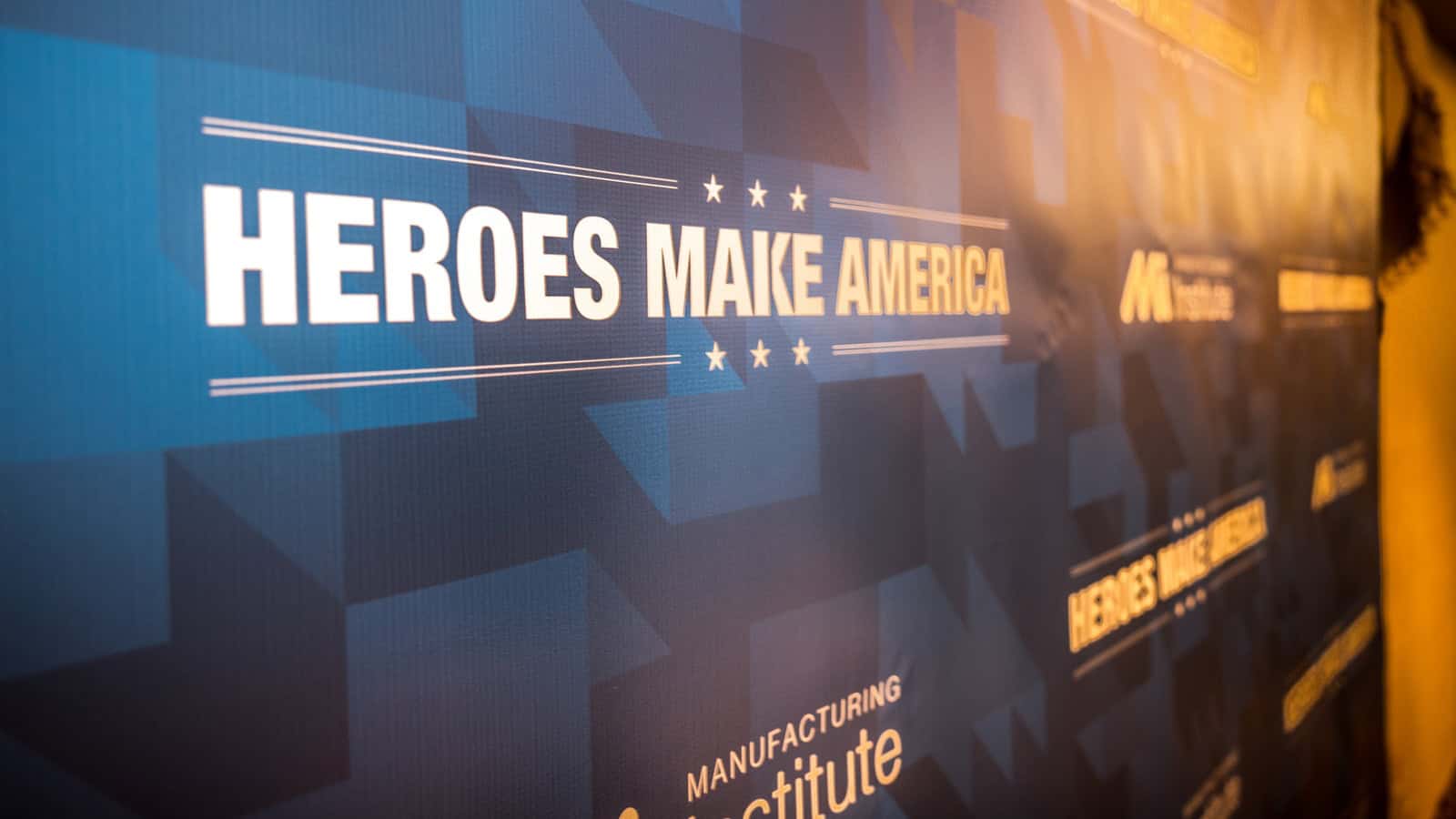
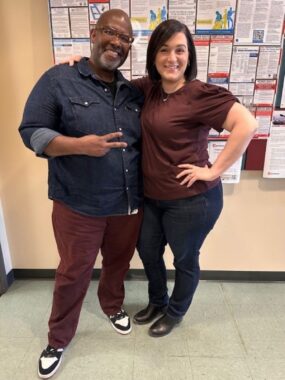 said Fields. “She called me the next day and asked if I was interested in an HR position. They offered it to me the week after Thanksgiving.”
said Fields. “She called me the next day and asked if I was interested in an HR position. They offered it to me the week after Thanksgiving.”
Heroes MAKE America Draws a Crowd

Manufacturing Employment Stays the Same

Manufacturing Job Openings Decline
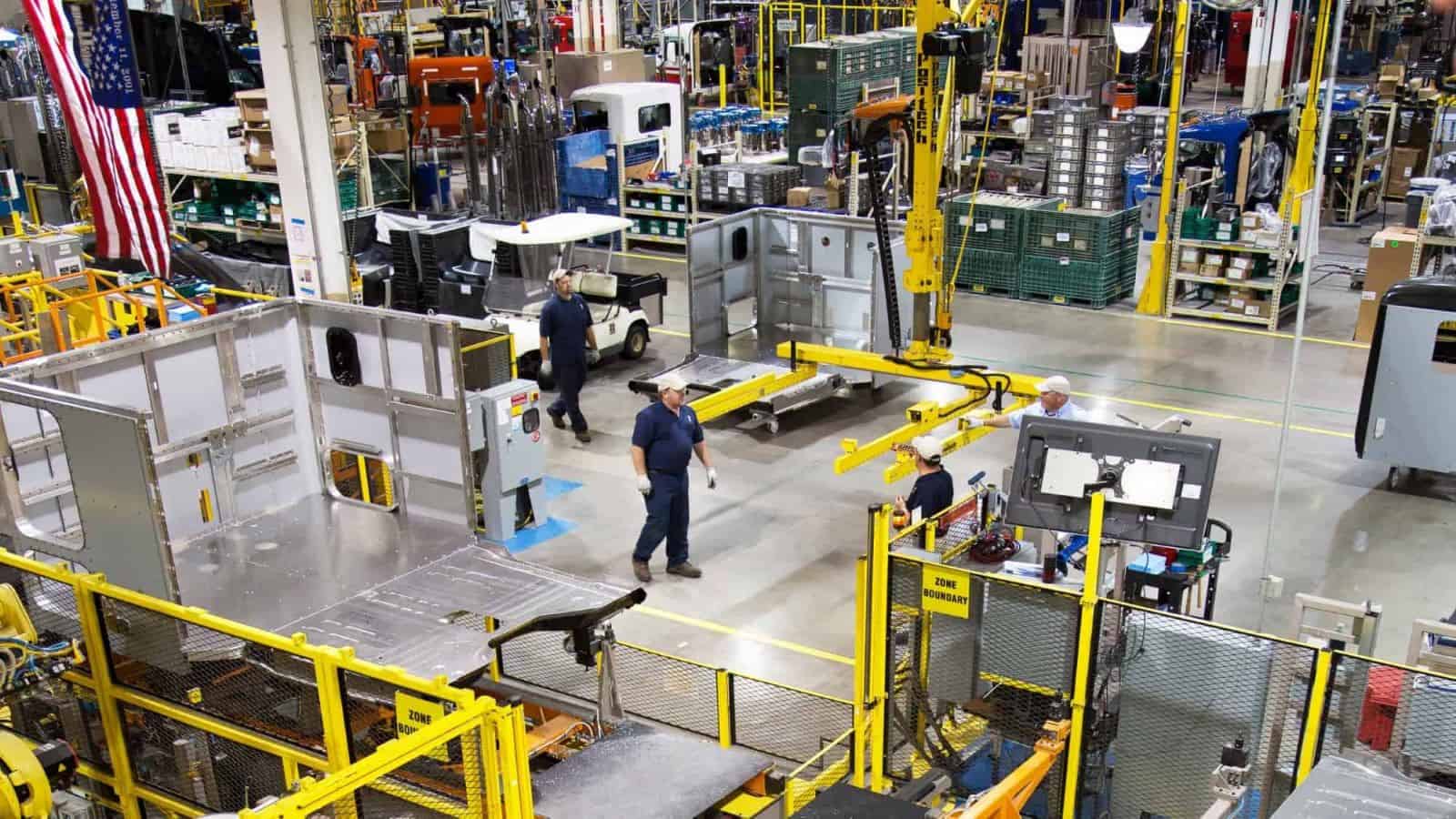
The MI Honors 2024 Women MAKE Award Winners

From Mentee to Mentor: Rockwell Automation’s Aaliyah Brown
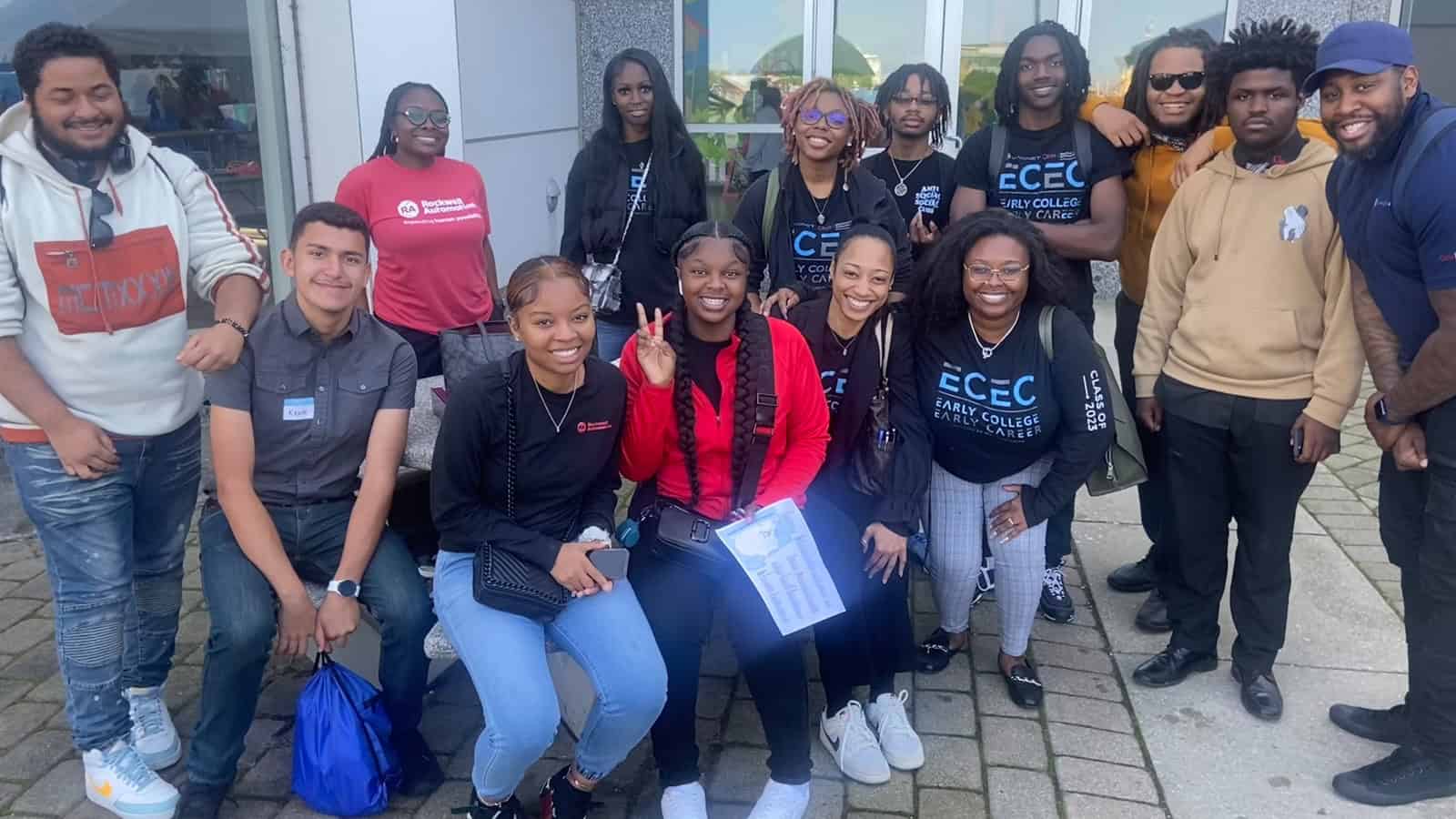
“Why Inclusion Matters”: GM’s Stephanie Thompson on STEM, Women in Manufacturing
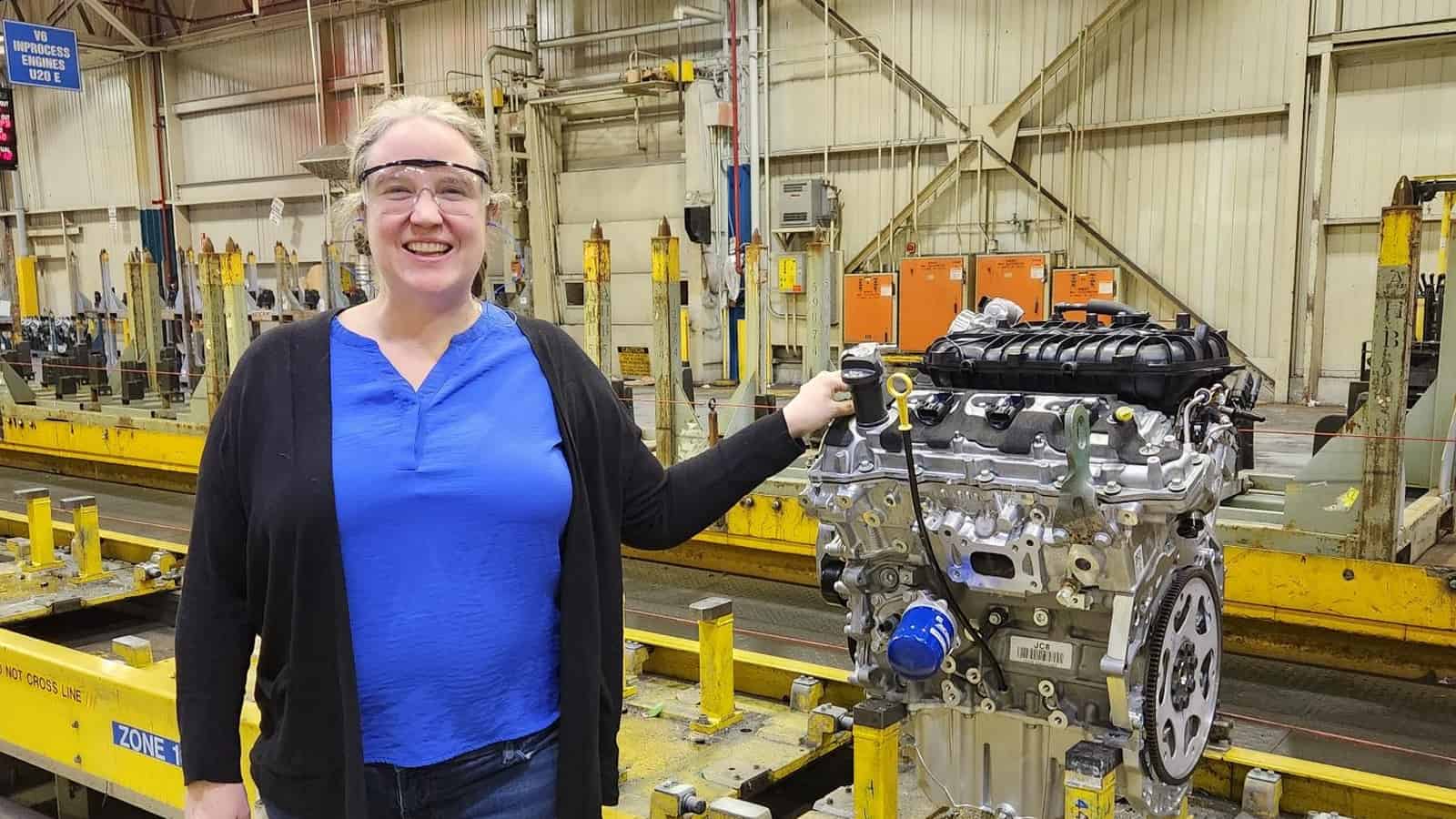
manufacturing workforce). “But one of the things you have to do as a leader is create intentionality and create environments where conflict is positive, where you can all create ideas to [fix] the problem and where individuals feel safe being themselves.”
